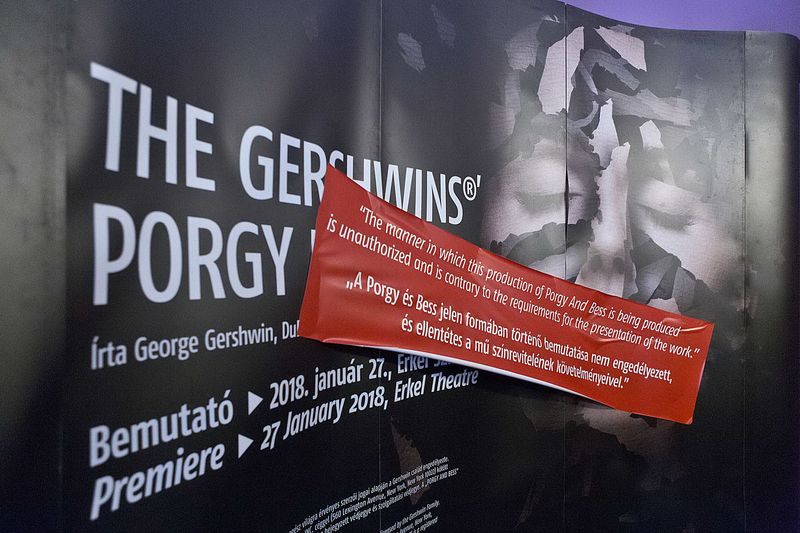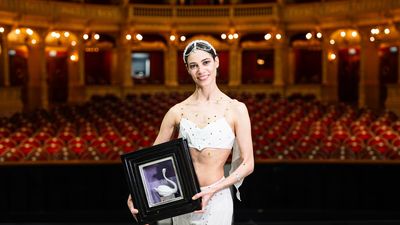
The Hungarian State Opera is about to stage a unique premiere regarding cast and production. Porgy and Bess is to be staged by András Almási-Tóth in a reinvented world with Hungarian singers at the Erkel Theatre.
When George Gershwin’s masterpiece Porgy and Bess® was first produced in 1935, some – misunderstanding the intention of the composer – felt aggrieved at the prejudice strengthening against Afro-Americans. Nothing could be further from Gershwin, who had studied their music for a long time, but to prevent their emancipation. With the operatic hit like I Got Plenty O’ Nuttin’ or Summertime that had such success as pop chart hits, the composer managed to put the Afro-American culture into the spotlight. As an act in favour of the emancipation the librettist (and brother) of the composer, Ira Gershwin introduced the rule of the all-black cast in the 1980s, a few years before his death.
Before this rule was introduced, the Hungarian State Opera had put Gershwin’s piece on stage with its own artists in the 1970s with György Radnai and Ferenc Begányi as Porgy, and Erzsébet Házy and Éva Andor. Although this production, directed by András Mikó even had a revival a decade later, in the past four decades neither the Hungarian State Opera, nor any other company were not allowed to put Porgy and Bess®on stage if not complying with the rules. This restriction is broken by the Hungarian State Opera in the current season when it stages Gershwin’s masterpiece with excellent Hungarian singers.
The production is directed by András Almási-Tóth in whose opinion the “all-black cast” stipulation has only hindered the opera as it made it more difficult to be staged. “While artistic and staging solutions have been reinvented – Puccini, for instance is played, sung and staged in a different way than it was fifty years ago – this opera was left out of this evolution. Its staging is very sterile: it could so far only take place in Catfish Row, only in the 1930s, which resulted in a kind of fairy-tale atmosphere devoid of reality” said the director, who has rediscovered Porgy and Bess and put it in very different settings. “It takes place at an area that has come into being by necessity. People who have lost their homes due to natural disasters or those seeking asylum from political pursuit reside there. They have no roots in this temporary living-space, they have a desire for a promised land.” The chorus also plays an important part in the opera. Director Almási-Tóth also sees a possible explanation of the piece as an oratorio telling the story with the help of a few soloists and the chorus. This approach is strengthened by the plot exploring human existence, homelessness, the quest for home and happiness.
The sets of the new production are designed by Sebastian Hannak, the costume designer is Krisztina Lisztopád. The Hungarian State Opera Orchestra and Chorus are conducted by István Dénes. The role of Porgy is sung by András Palerdi and Marcell Bakonyi, Bess is sung by Gabriella Létay Kiss and Orsolya Sáfár. The dance pieces choreographed by Dóra Barta, the badora dance company and the Kecskemét City Ballet are performed by stars of the Hungarian National Ballet: Ildikó Boros, Lea Földi, Alexandra Kozmér, Aleszja Popova, Levente Bajári, Gergő Ármin Balázsi, Iurii Kekalo, Dávid Kerényi Miklós, Zoltán Oláh and Dmitry Timofeev.
Hopefully, this historic and sensational premiere can pave the way for other opera companies in the world so that this brilliant opera can be heard in more and more places.
International press on Porgy and Bess
“That should be a choice available to casting departments, here and elsewhere in the world, not a legally binding restriction.” Donal Henahan, New York Times, 1985
“The narrative is as applicable to non-black communities and that is now widely recognised… It is for him a very human story. The context may be the Black south circa 1900 but the sentiments are universal.” Kurt Barlin quoting Clarke Peters, BBC, 2006
“This is a historic moment," says Nunn's musical supervisor Gareth Valentine, who has gone through the score with a fresh-air canister, orchestrating new dance sequences (there are no dances in the original), paring the band down from 55 instruments to 20 (with synthesisers), and lowering the keys for the women, whose lyrics, Valentine reckons, are often set too high for comprehension.” Independent, 2006
“The problem is, updating or relocating this particular opera has never been straightforward. That stems from Gershwin's insistence from the word go that it should always be sung by an all-black cast – never a problem for the Cape Town production.” Charles Packard quoted by Stephanie Wolf, Colorado Public Radio, 2016
“It is not that appearance does not matter in opera. But voice, artistry and dramatic presence matter more.” Anthony Tommasini quoted by Georg Predota, Interlude, 2017
“Perhaps the time has come for the Gershwin estate to end this casting directive. Over the last 40 years the field of opera has increasingly embraced nontraditional casting. If Leontyne Price could portray an adolescent geisha in ''Madama Butterfly,'' a role she sang exquisitely, why not a white soprano as Bess?... The bass-baritone Simon Estes, who has been outspoken about the struggles he and other black artists have faced in opera, considers the all-black cast stipulation a disservice both to ''Porgy and Bess'' and the cause of integration.
''Music knows no color,'' he said in a telephone interview. ''This may sound extreme, but I think it's almost unconstitutional for 'Porgy and Bess' to be performed only by black artists.'' Mr. Estes is proud to have starred in a 1977 production of the work at the Zurich Opera, which, defying protocol, used a mixed cast and played for 25 sold-out performances. For years Mr. Estes has sternly criticized opera companies that resisted allowing black artists to sing any roles they were vocally suited for. He applies the same principle to ''Porgy and Bess.'' ''People of color can sing 'Porgy' magnificently,'' he said. ''People who are not of color can sing it magnificently.''
It is hard to argue with his reasoning…
''Porgy and Bess'' is not a folk opera; it is a great opera. No one should be barred by race from performing it onstage.
Of course casting the work with black artists would seem to assure authenticity. But the dramatic element of opera has never been based on that kind of reality. It can be deeply moving to see ''La Bohème'' performed by young people who actually look like ragtag bohemian artists. Still, most opera fans were perfectly willing to accept Luciano Pavarotti as a starving Parisian poet in order to hear him sing Rodolfo's soaring lines and take us deep into the essence of the work.
But what about operas in which race is a crucial element of the story, like Verdi's ''Otello''? In one of her finest productions, Ms. Caldwell cast Shirley Verrett, the black soprano, as Desdemona opposite the renowned Otello of the white tenor James McCracken. Ms. Verrett's skin was somewhat lightened by makeup; McCracken was covered by dark body paint. But color didn't matter; singing did. A few measures into the Act I love duet, and the audience was enthralled…
It is hard to imagine an opera company today hesitating to cast a vocally gifted artist of any race in any role.” AnthonyTommasini, The New York Times, 2002


